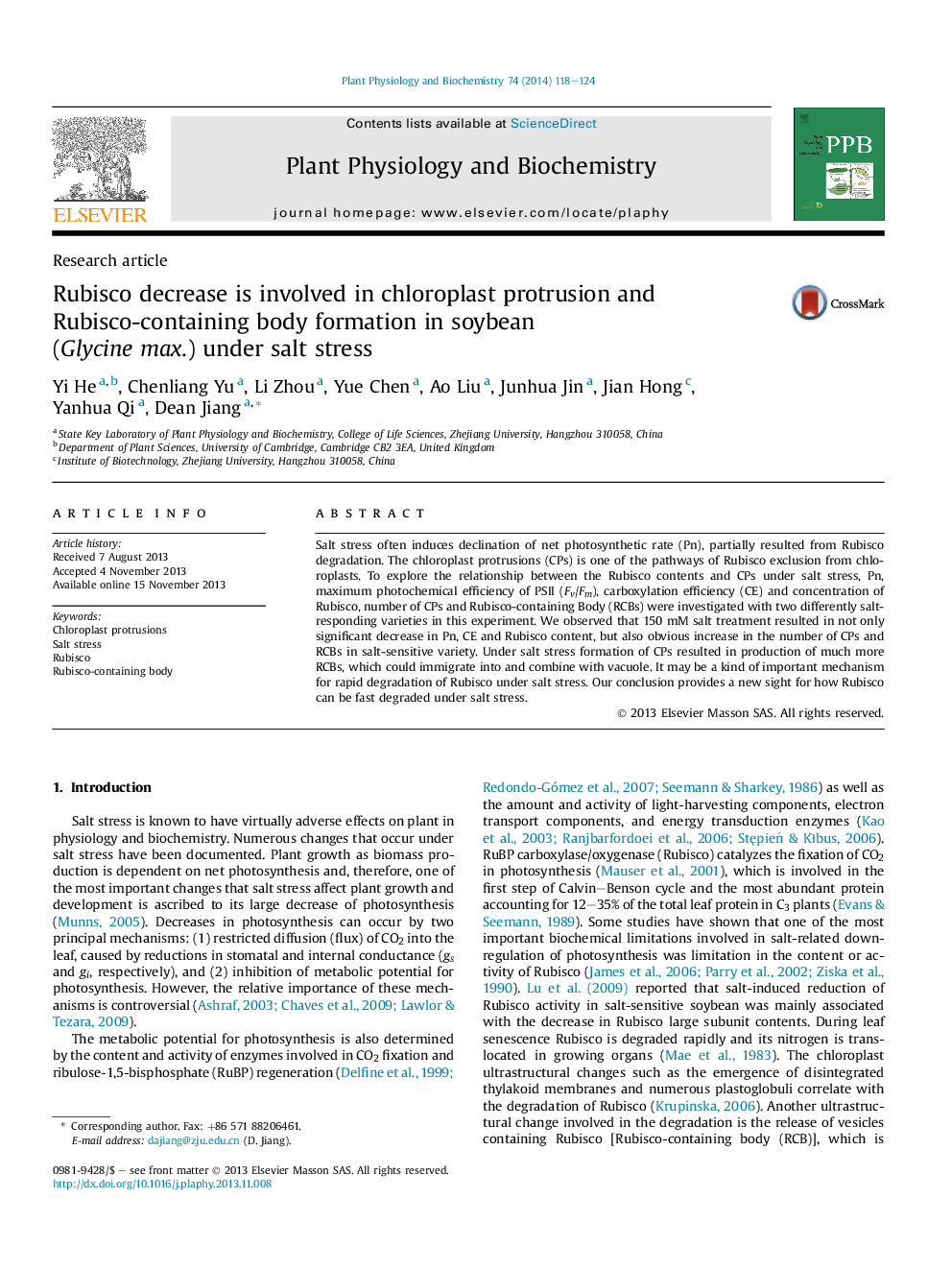| Article ID | Journal | Published Year | Pages | File Type |
|---|---|---|---|---|
| 2015944 | Plant Physiology and Biochemistry | 2014 | 7 Pages |
•We found that salt stress can induce the formation of CPs and RCBs in soybean.•Average number of CPs and RCBs in Melrose is greater than in S111-9 after salt stress.•Increased number of CPs and RCBs affect the Rubisco content and activity.•Increased number of CPs and RCBs also contribute to the degradation of Rubisco.•Formation of CPs and RCBs is a kind of important mechanism for Rubisco degradation.
Salt stress often induces declination of net photosynthetic rate (Pn), partially resulted from Rubisco degradation. The chloroplast protrusions (CPs) is one of the pathways of Rubisco exclusion from chloroplasts. To explore the relationship between the Rubisco contents and CPs under salt stress, Pn, maximum photochemical efficiency of PSII (Fv/Fm), carboxylation efficiency (CE) and concentration of Rubisco, number of CPs and Rubisco-containing Body (RCBs) were investigated with two differently salt-responding varieties in this experiment. We observed that 150 mM salt treatment resulted in not only significant decrease in Pn, CE and Rubisco content, but also obvious increase in the number of CPs and RCBs in salt-sensitive variety. Under salt stress formation of CPs resulted in production of much more RCBs, which could immigrate into and combine with vacuole. It may be a kind of important mechanism for rapid degradation of Rubisco under salt stress. Our conclusion provides a new sight for how Rubisco can be fast degraded under salt stress.
